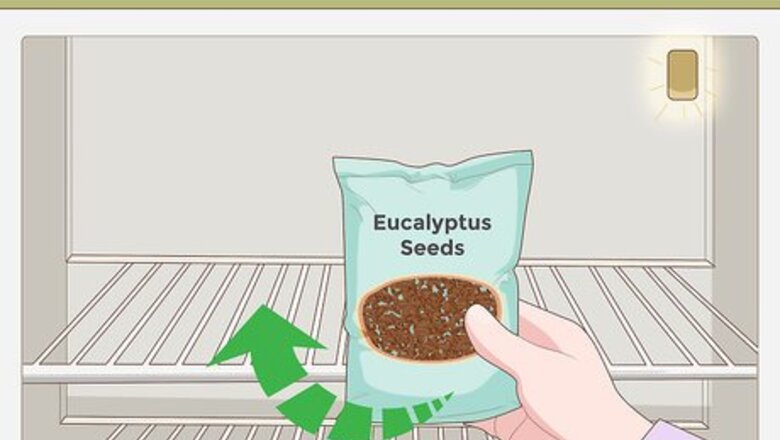
views
Germinating Eucalyptus from Seed

Chill the seeds. Transfer the seed package to the refrigerator and leave the seeds there for two months. This is called stratification, and it will help bring the seeds out of dormancy, and encourage germination. Stratification replicates the dormancy period that happens over winter, so the seeds will come to life again and germinate when they're removed from the refrigerator.
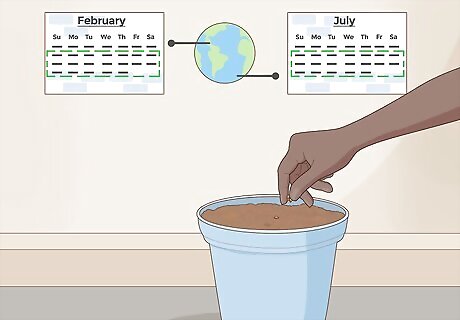
Plant the seeds in late winter. Eucalyptus seeds should be sown in pots indoors several weeks before the last expected frost. In the Northern Hemisphere, aim to plant in mid-February. In the Southern Hemisphere, aim to plant in mid-July. To find your last expected frost date, check local government or meteorological websites.
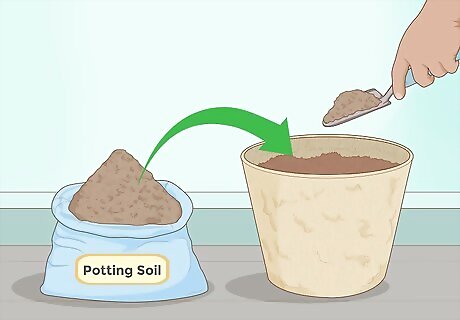
Fill peat pots with potting soil. Use a porous potting soil that has lots of pearlite for good drainage. It’s also important to use peat pots that can be transplanted with the seedlings, because eucalyptus doesn’t respond well to transplanting. Growing eucalyptus from seed is the best way to propagate new plants, because propagating by cuttings is difficult and the success rate is much lower.

Plant the seeds. Sprinkle a few seeds on top of the potting soil in each peat pot. Cover each pot with a light dusting of horticultural sand. This will hold the seeds in position, keep them warm, and keep them moist as they germinate. Don’t use sand from a beach or the backyard, as it could be contaminated with pathogens that will kill the seeds.

Mist the seeds regularly. As soon as you’ve covered the seeds with sand, mist them with water to help them settle into the soil. As the seeds germinate, mist the soil every one to two days to keep the growing medium evenly moist.

Keep the seeds warm. Move the pots to a warm place, such as a heated greenhouse or the top of the refrigerator. You can also keep the pots on a heating pad to keep them warm as they germinate.

Trim the weakest seedlings. Because you planted multiple seeds in each pot, you may have more than one seedling sprout up. Inspect each pot and look for the largest, thickest, and healthiest seedling. Use sterilized scissors to trim all the weaker seedlings down to soil level. To sterilize the scissors, wipe them down with isopropyl alcohol.
Transplanting Seedlings

Aim to transplant the seedlings mid-summer. By that time, the seedlings will have had plenty of time to establish themselves. The warmer temperatures at this time of year will also be ideal for moving the eucalyptus outside.

Choose a sunny location. Eucalyptus requires full sun, and this means at least 6 to 8 hours of direct sunlight every day. You should also choose a location that’s several feet (a few meters) from any buildings or fences, otherwise the fast-growing tree could cause damage to the nearby structure.

Protect the plant from strong winds. Make sure that the location you choose shields the plant from strong winds. Eucalyptus is short-rooted, so it may not withstand wind.
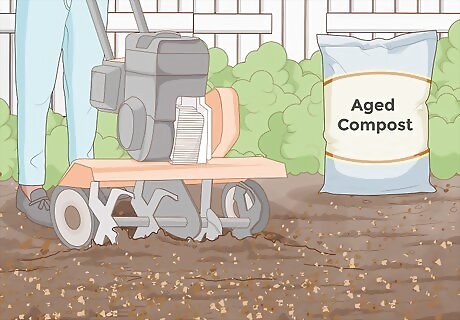
Amend the soil. Till the soil to a depth of 12 inches (30 cm) using a hand or rototiller. Spread a few inches (several centimeters) of aged compost over the area and use the tiller to work it into the soil. This will ensure that the soil is nutrient-rich and well-draining.
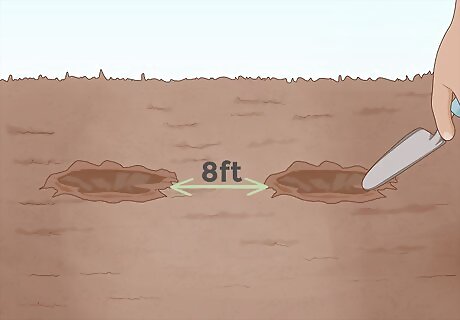
Dig holes large enough to accommodate the peat pots. Use a spade or small shovel to dig holes that are slightly wider and deeper than the pots. The holes should be spaced at least 8 feet (2.4 m) apart to accommodate the mature size of the trees.

Plant the seedlings in the ground. Place one peat pot in each hole and cover the transplants with additional soil. Use your hands to gently pack the soil around the roots. Water the area thoroughly to help settle the eucalyptus in the ground.
Caring for Eucalyptus

Apply a layer of mulch to the soil. Mulch will help to control the temperature of the soil, protect the tree from cold, eliminate weeds, and keep the soil moist. Ideal mulch for eucalyptus is a thick and bulky organic matter, such as bark or compost.

Keep the soil moist. Eucalypti will tolerate some drought, but they will thrive better in soil that’s consistently moist. During dry spells, water the trees once a week. Shrivelling leaves are an indication that the plant isn't getting enough water. Give the plant a thorough soaking. The affected leaves may not bounce back. Once the tree is established after about 5 years, you won’t have to water or feed the eucalyptus, even during dry periods.
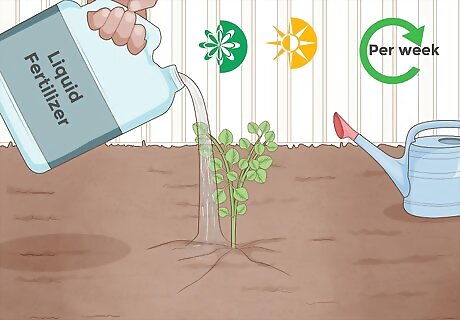
Fertilize the plant regularly during the growing seasons. The growing season for these plants is between mid-spring and mid-summer. Each week, add a liquid fertilizer to the water before watering the plant. The best fertilizer for eucalyptus is high in phosphorous and low in nitrogen. For the final two feedings near the end of summer, switch to a high-potassium fertilizer to help prepare the tree for winter.



















Comments
0 comment